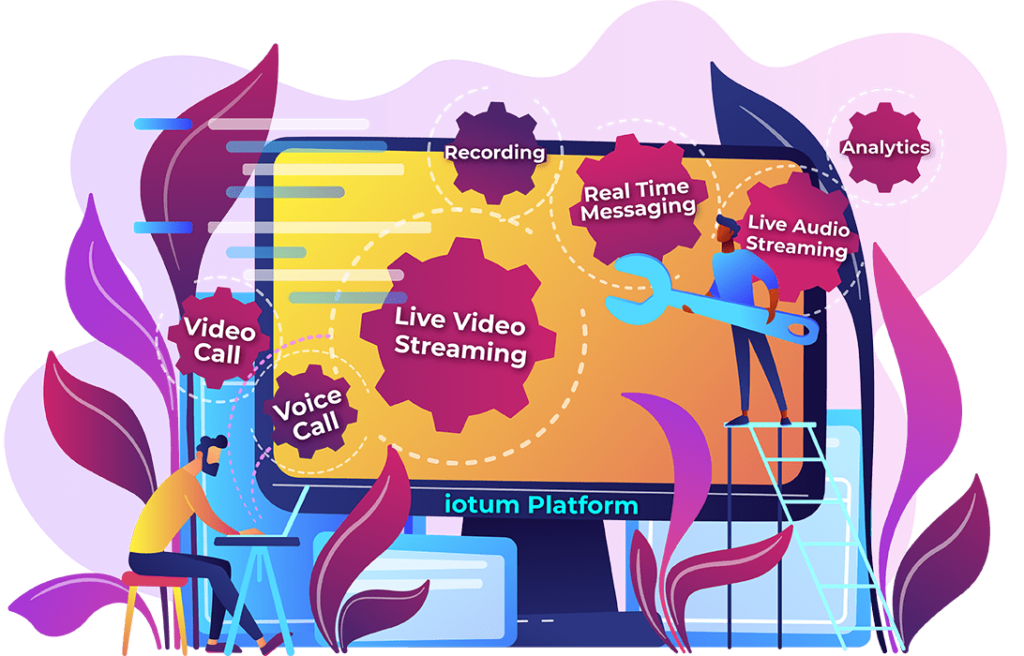Video conferencing has been transforming the way people communicate and collaborate for decades. But more recently, advances in technology have made it possible to embed video conferencing systems directly into existing business tools and applications. In this blog post, we’ll explore how integrating embedded video conferencing with other business systems can improve collaboration and productivity. We’ll also look at some of the benefits and challenges of doing so, as well as best practices for ensuring a seamless integration.
The Benefits of Embedded Video Conferencing Integration
Integrating embedded video conferencing with other business tools and applications can be an effective way to improve collaboration and productivity. By providing users with direct access to video chat capabilities within their existing workflows, they can engage in face-to-face conversations without having to leave their current environment or switch between multiple applications. This eliminates unnecessary steps and makes it easier for teams to quickly share ideas, discuss projects, and make decisions in real-time.

Integrating embedded video conferencing also makes it easier for organizations to keep track of communications across multiple channels. For example, if a conversation occurs via email or instant message but then moves to a video call, with screen sharing and annotation all of that communication is stored in one place—making it easier for team members to reference past discussions when needed. Additionally, integrated telephony features like dial-in features and mobile applications allow users to stay connected even when they are away from their desks or on the go.
Challenges of Integrating Embedded Video Conferencing
While there are many benefits associated with integrating embedded video conferencing with other business systems, there are also potential challenges that need to be addressed. One such challenge is finding the right development tools that allow integrated streaming solutions—as not all third-party providers offer these capabilities. As a business, you need to find a plug-and-play integration that ensures embedded video conferencing can be added with minimal development time. Additionally, organizations need to consider user expectations when deciding which type of solution will be most suitable for their needs; some solutions may not support certain features (e.g., screen sharing) that users expect from traditional video calls. Finally, integration may require additional resources (e.g., staff time) depending on the complexity of the project; this should be taken into account before embarking on such a venture.
Ensuring Smooth Integration
Organizations looking to integrate embedded video conferencing with their existing business tools and applications should first conduct thorough research into available solutions—ensuring that they cover all desired features while still being easy enough for non-technical staff members to use without any difficulty. Once a suitable solution has been identified, organizations should focus on creating an effective testing plan; this will help ensure that any issues are addressed before full deployment takes place across the organization’s entire workforce. Finally, organizations should make sure that appropriate training materials are prepared ahead of time so users feel comfortable using the new system right away—ultimately making it easier for them to get up and running quickly once deployment begins in earnest.

Embedding video conferencing directly into existing business tools and applications can provide numerous benefits—from improved collaboration among team members to greater efficiency when communicating across multiple channels—but organizations must ensure they have access to suitable development tools before attempting any integration projects themselves. With proper research into available solutions and planning around testing cycles and user expectations, however, integration can be achieved quickly with minimal disruption. Ultimately, by following best practices regarding integration, organizations can reap the rewards associated with deploying an embedded video conferencing system throughout their workforce.
To learn more about iotum’s embedded video conferencing book a 15-minute meeting with one of our experts. Book Now >>


